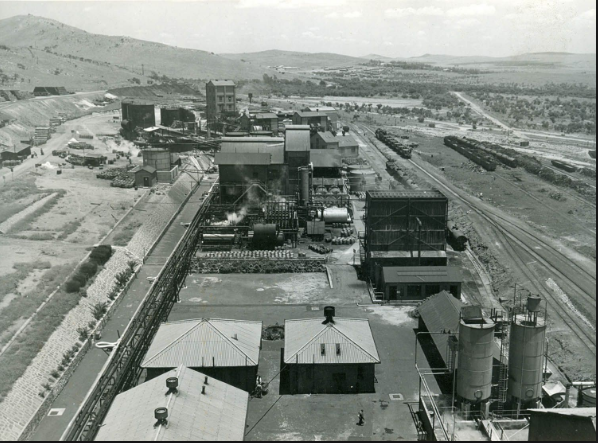Place image

The simple brick structure and its adjacent chimney contained the boiler and blower house of a blast furnace and formed part of the iron works established by Cornelis Delfos, better known as the Pretoria Iron Mines Ltd. It was there, in 1918, that cast-iron from indigenous ore was produced on a large scale for the first time in South Africa. Delfos became a major promoter of Iscor when it was established in 1928, and the company later developed about this installation. It was declared a National Monument under old NMC legislation on 10 August 1979.
ArcelorMittal South Africa has been in existence since 1928 when the company, then called Iscor, with its first works in Pretoria, was founded as a statutory parastatal organisation. The objectives of establishing the company were, to produce iron and a range of steel and to create employment opportunities for communities close to its operations . The first steel was tapped from the open-hearth furnace at the Pretoria Works on, 4 April 1934. Wartime needs for steel and the local manufacture of numerous necessities brought about a sharp increase in demand which necessitated the expansion of the company. In 1942 the Iscor Company established to meet the increasing demand for steel in South Africa.
The plate mill at Vanderbijlpark Works was commissioned in 1943 mainly for the production of heavy plate for ship repairs and the manufacture of armoured cars for South Africa’s war effort. Directly after the war in early 1947, the company decided to build a fully integrated steel works in Vanderbijlpark. Iscor started trading in 1947.
Construction of an integrated steelworks at Newcastle started in 1971. In November 1989 Iscor was privatised and Iscor Limited shares were listed in the Steel and Allied Sector of the Johannesburg Stock Exchange. Iscor bought USCO's steel division (today Vereeniging Works) in mid-1991.
A joint venture with Industrial Development Corporation was formed in 1996 to build Saldanha Steel Mill. Saldanha Steel was commissioned in 1998 and started production in 1999. In December 2001 Iscor’s Steel and mining groups were unbundled into two separately listed mining and steel companies, namely Kumba Resources and Iscor, respectively. At the time of the unbundling, the mines that had been developed by Iscor for coal, zinc and certain industrial minerals used in steel production, together with its two iron ore mines as well as its heavy mineral interests, became part of Kumba Resources. At the end of 2002 Iscor acquired full control of the Saldanha Steel Mill.
In February 2003 LNM Holdings took control of Iscor Limited through a R1.8-billion partial share buy-out and in August 2004 the company was renamed Ispat Iscor Limited. In December 2004 Ispat International NV acquired LNM Holdings NV, the parent company of Ispat Iscor. After the acquisition, the merged company’s name was changed to Mittal Steel Company NV. Ispat Iscor Limited commenced trading under the new name Mittal Steel South Africa Limited in March 2005. After the merger between Mittal Steel and Arcelor Mittal Steel South Africa commenced trading under the new name - ArcelorMittal South Africa - in October 2006.
References
9/2/258/0133
Further Reading
https://www.sahistory.org.za/dated-event/government-launches-operation-iron-fist-townships
https://www.sahistory.org.za/article/pre-1500
https://www.sahistory.org.za/.../iron-age-kingdoms-southern-africa